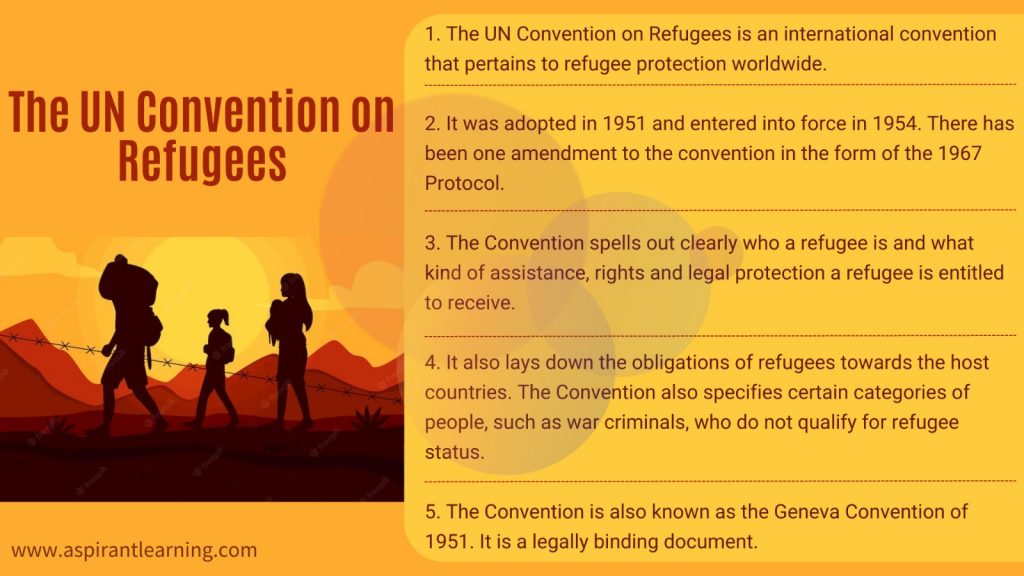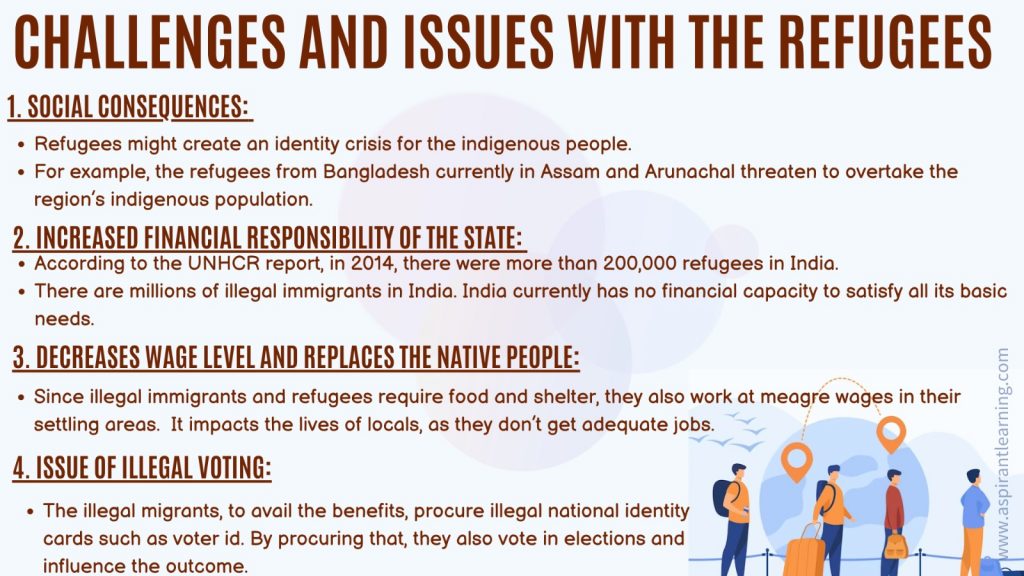News Highlights:
- A Central government scheme to provide financial assistance to Hindu and Sikh families who migrated to India from Pakistan’s West Punjab after the 1947 partition has run into trouble.
- The scheme, sanctioned in 2018, has been extended till March 31, 2024, amid several issues, ranging from lack of documents to poor response from families.
Key Issues:
- Several claims for financial assistance could not be processed, as the individuals could not produce original documents such as refugee cards when they entered India from Pakistan’s Sialkot in 1947.
- Seventy per cent of the 5,764 eligible families are Dalits. Just 903 families’ claims have been settled so far.
- According to the president of the West Pakistan Refugees Action Committee, the local administration was not forthcoming in processing the claims.
- Several pleas before the tehsildar (revenue officials) not initiated any action.
- There are many allegations of corruption on the revenue officials demanding bribes before clearing the files.
Refugee:
- About:
- A refugee, conventionally speaking, is someone who has lost the protection of his or her country of origin and who cannot or is unwilling to return there due to well-founded fear of persecution.
- Such a person may be called an asylum seeker until granted refugee status by the contracting state or the United Nations High Commissioner for Refugees (UNHCR) if they formally claim asylum.
- There are over 2,12,000 refugees in India.
- Refugees Protected in India:
- India ensures that refugees can access protection services on a par with their fellow Indian hosts.
- Those refugees registered directly by the Government, such as those from Sri Lanka, are entitled to Aadhaar cards and PAN cards to enable their economic and financial inclusion.
- They can access national welfare schemes and contribute effectively to the Indian economy.
- However, those registered with UNHCR, such as refugees from Afghanistan, Myanmar and other countries, do not possess government-issued documentation while they have access to protection and limited assistance services.
- Thus, they cannot open bank accounts and don’t get benefits from all government welfare schemes and are thus inadvertently left behind.

Causes of refugee influx:
- Open Borders:
- This is not a direct factor, but it facilitates movement towards India.
- For example, many people from Myanmar could enter India due to the open border.
- State Persecution
- Rohingyas are a sect of Muslims who claim they are the original inhibitors of the Rakhine, a state in Myanmar.
- However, Myanmar considers them illegal immigrants from Bangladesh and has withdrawn citizenship rights from the Rohingyas.
- This has forced Rohingyas to flee to other countries.
- Inadequate implementation
- The government’s order to curb the refugee influx from Myanmar was not implemented effectively, as the Assam Rifles couldn’t effectively monitor the border with just three battalions.
- Unstable Neighbourhood countries
- India’s neighbouring countries have been facing one or other problems since their formation.
- For example, the Civil war was now followed by Human Rights Violations in Sri Lanka. Similarly, the Bangladesh liberation war was later followed by military rule, etc.
- Climate Change
- Low-lying island nations are threatened by rising sea levels and forced to leave their countries.
- Such refugees are known as Environmental refugees.
India’s Refugee Policy and Issues:
- Lacks specific legislation:
- India lacks specific legislation to address the problem of refugees, in spite of their increasing inflow.
- India is not a party to the 1951 Refugee Convention and its 1967 Protocol, the key legal documents pertaining to refugee protection.
- However, India has had a stellar record on the issue of refugee protection.
- India has a moral tradition of assimilating foreign people and cultures.
- Problems with the Foreigners Act:
- The Foreigners Act of 1946 fails to address the peculiar problems faced by refugees as a class.
- It also gives unbridled power to the Central government to deport any foreign citizen.
- Values from the constitution of India:
- The constitution of India respects the life, liberty, and dignity of human beings.
- The Supreme Court in the National Human Rights Commission vs State of Arunachal Pradesh (1996) held that “while all rights are available to citizens, persons including foreign citizens are entitled to the right to equality and the right to life, among others.”
- Further, Article 21 of the Constitution encompasses the right of nonrefoulement.
- Nonrefoulement is the principle under international law which states that a person fleeing persecution from his own country should not be forced to return to his own country.

Legislative Framework to Handle Refugees:
- Foreigners Act of 1946:
- Under Section 3, the Central government is empowered to detect, detain and deport illegal foreign nationals.
- Passport (Entry into India) Act, 1920:
- Under Section 5, authorities can remove an illegal foreigner by force under Article 258(1) of the Constitution of India.
- Registration of Foreigners Act of 1939:
- Under this, there is a mandatory requirement under which all foreign nationals (excluding overseas citizens of India) visiting India on a long-term visa (more than 180 days) are required to register themselves with a Registration Officer within 14 days of arriving in India.
- Citizenship Act, 1955:
- It provided provisions for renunciation, termination, and deprivation of citizenship.
- Further, Citizenship Amendment Act 2019 (CAA) seeks to provide citizenship only to Hindu, Christian, Jain, Parsi, Sikh, and Buddhist immigrants persecuted in Bangladesh, Pakistan, and Afghanistan.
Pic Courtesy: Freepik
Content Source: The Hindu



